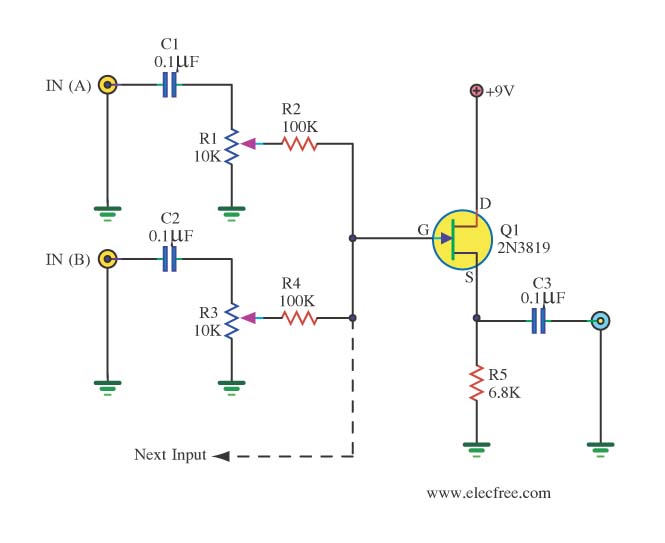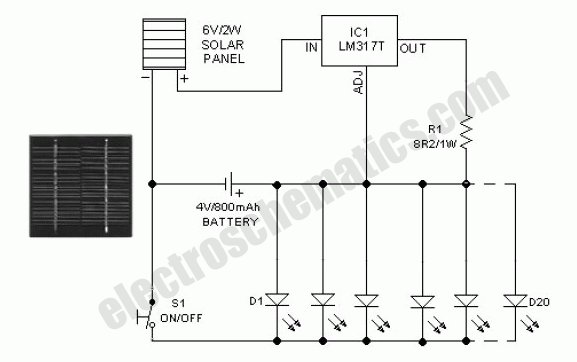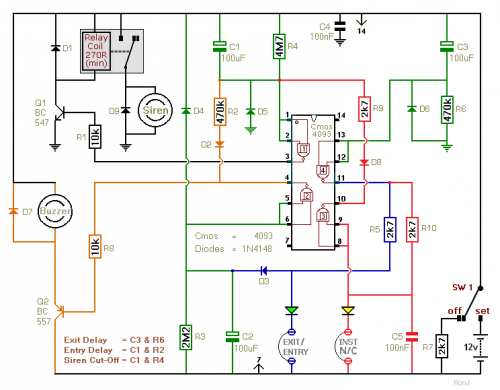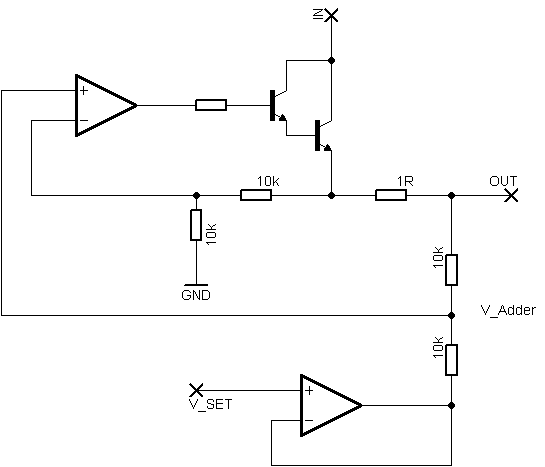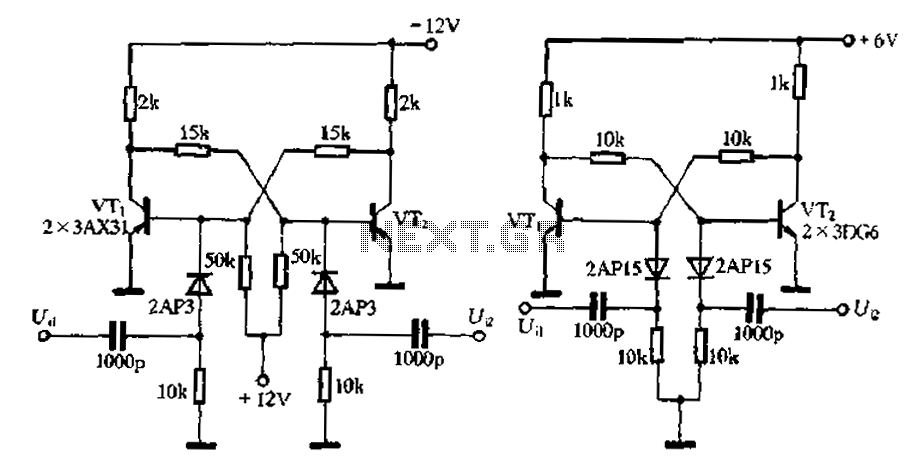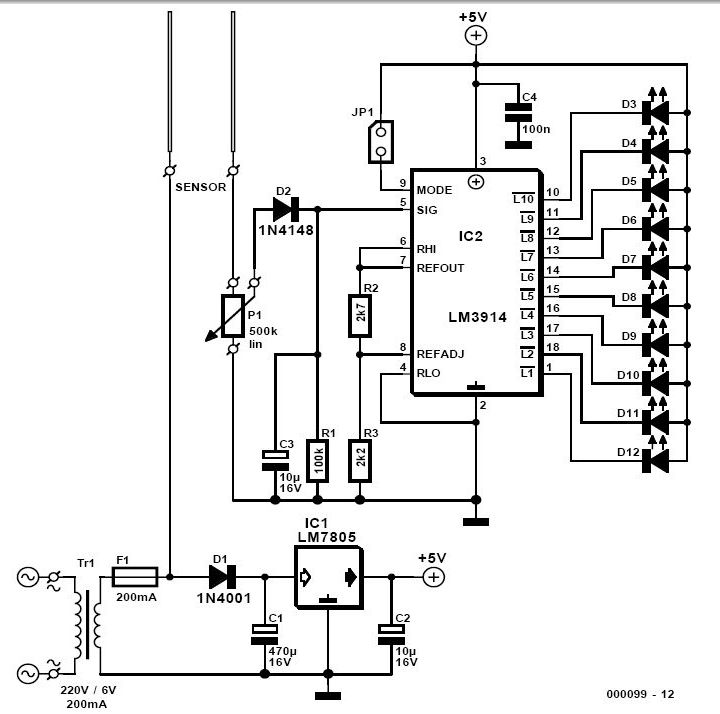
KTM03 type used to control the two anti-parallel thyristor circuit
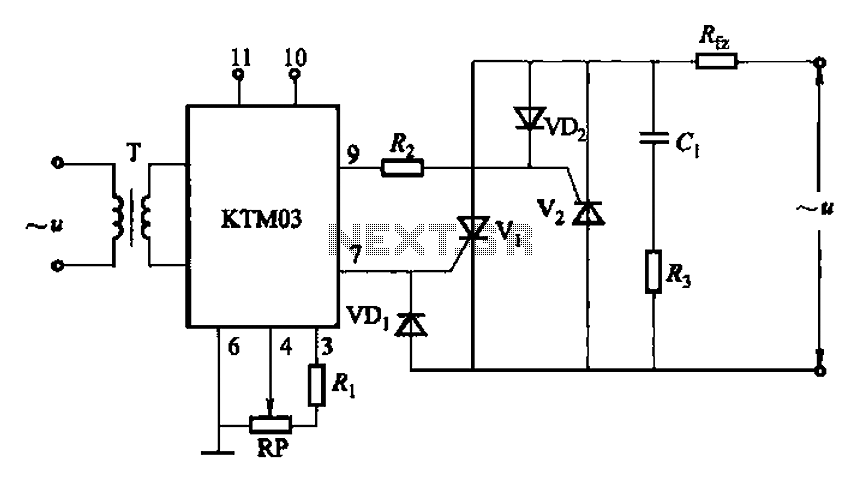
Adjustment potentiometer RP can modify the conduction angle of thyristor Vl, vz, thus altering the voltage applied across the load Rfz.
The adjustment potentiometer (RP) serves a critical role in controlling the conduction angle of the thyristors Vl and vz within the circuit. By varying the resistance of RP, the firing angle of the thyristors can be adjusted, which directly influences the amount of voltage delivered to the load Rfz. This modulation of voltage is essential for applications requiring precise control over power delivery, such as in dimmers, motor speed controllers, and heating elements.
The circuit typically includes a phase control mechanism where the thyristors are triggered at specific intervals during the AC cycle. The adjustment potentiometer allows for fine-tuning of these intervals, effectively controlling the duty cycle and, consequently, the average voltage supplied to the load.
In practical applications, the potentiometer may be part of a feedback loop that ensures stable operation despite variations in load conditions. The design should also consider the power ratings of the components involved, ensuring that the thyristors can handle the maximum load current without overheating. Additionally, proper heat sinking for the thyristors may be necessary to maintain reliability and performance over extended periods of operation.
Overall, the inclusion of an adjustment potentiometer in the circuit enhances the versatility and functionality of the power control system, allowing for tailored voltage outputs to suit specific load requirements.Adjustment potentiometer RP, can change the thyristor Vl, vz conduction angle, thereby changing the applied voltage across the load Rfz size.
The adjustment potentiometer (RP) serves a critical role in controlling the conduction angle of the thyristors Vl and vz within the circuit. By varying the resistance of RP, the firing angle of the thyristors can be adjusted, which directly influences the amount of voltage delivered to the load Rfz. This modulation of voltage is essential for applications requiring precise control over power delivery, such as in dimmers, motor speed controllers, and heating elements.
The circuit typically includes a phase control mechanism where the thyristors are triggered at specific intervals during the AC cycle. The adjustment potentiometer allows for fine-tuning of these intervals, effectively controlling the duty cycle and, consequently, the average voltage supplied to the load.
In practical applications, the potentiometer may be part of a feedback loop that ensures stable operation despite variations in load conditions. The design should also consider the power ratings of the components involved, ensuring that the thyristors can handle the maximum load current without overheating. Additionally, proper heat sinking for the thyristors may be necessary to maintain reliability and performance over extended periods of operation.
Overall, the inclusion of an adjustment potentiometer in the circuit enhances the versatility and functionality of the power control system, allowing for tailored voltage outputs to suit specific load requirements.Adjustment potentiometer RP, can change the thyristor Vl, vz conduction angle, thereby changing the applied voltage across the load Rfz size.
Warning: include(partials/cookie-banner.php): Failed to open stream: Permission denied in /var/www/html/nextgr/view-circuit.php on line 713
Warning: include(): Failed opening 'partials/cookie-banner.php' for inclusion (include_path='.:/usr/share/php') in /var/www/html/nextgr/view-circuit.php on line 713
